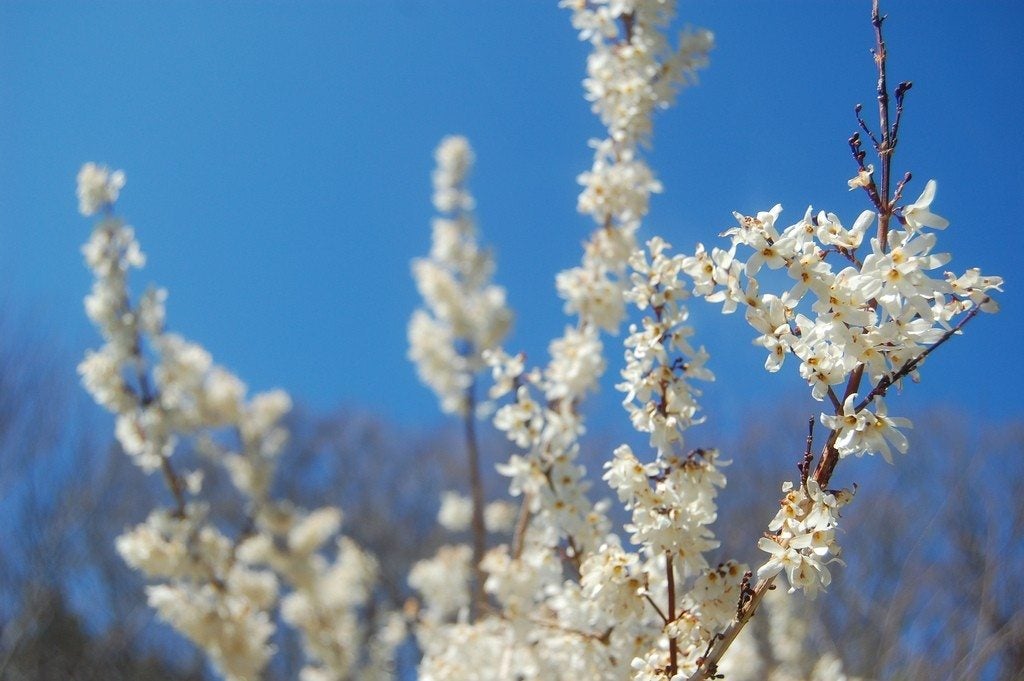False Forsythia Bushes: Growing Abeliophyllum Shrubs


Perhaps you're looking for something different to add to your landscape, maybe a spring blooming shrub that doesn't grow in the landscape on both sides of you and across the street. You'd also like something that's low maintenance and eye catching, something that signals the end of winter and that spring is just around the corner. Perhaps you should consider growing white forsythia shrubs.
White Forsythia Info
Commonly called false forsythia, they are classified as small shrubs similar to the more familiar yellow forsythia bushes we are accustomed to seeing in spring. Stems are arching and blooms are white with a pinkish tinge. Blooms emerge from purple buds before leaves appear and are showy and slightly fragrant. White forsythia shrubs are also known as Korean Abelialeaf. Botannically called Abelioplyllum distichum, white forsythia info says growing Abeliophyllum provides an attractive, summer foliage display. Don't expect autumn color in the foliage, however.
Abeliophyllum Culture
Preferred Abeliophyllum culture is full sun and well-draining soil, but white forsythia shrubs tolerate light or dappled shade. False forsythia bushes like alkaline soil but grow in any well-draining medium soil. A native to central Korea, false forsythia bushes are hardy in the United States in USDA plant hardiness zones 5 to 8. Growing Abeliophyllum can look sparse and even scraggly when first planted. Correct this with pruning when bloom time is finished. White forsythia info indicates overall pruning of one-third makes the shrub fuller, producing more flowers the following year. Trim arching stems of false forsythia bushes above the node. Once established, prune a few of the stems back to the base. Reaching only 3 to 5 feet (1-1.5 m.) in height, with about the same spread across, it is easy to fit white forsythia shrubs into a foundation planting or mixed shrub border. Plant them in front of taller, evergreen shrubs to really show off the white spring blooms.
Additional Care of False Forsythia Bushes
Watering of white forsythia shrubs is an integral part of their care. Keep soil moist until bushes become established and water occasionally during the summer heat. Feed with a nitrogen fertilizer a few times during the summer. In the coldest areas of white forsythia shrubs' growing zones, winter mulch helps protect the roots. Mulch also retains moisture, no matter the area. If false forsythia shrubs are not available from local nurseries, a quick Internet search of the bush offers a few sources where they can be purchased. Give them a try for an unusual late winter show.
Sign up for the Gardening Know How newsletter today and receive a free copy of our e-book "How to Grow Delicious Tomatoes".

Becca Badgett was a regular contributor to Gardening Know How for ten years. Co-author of the book How to Grow an EMERGENCY Garden, Becca specializes in succulent and cactus gardening.